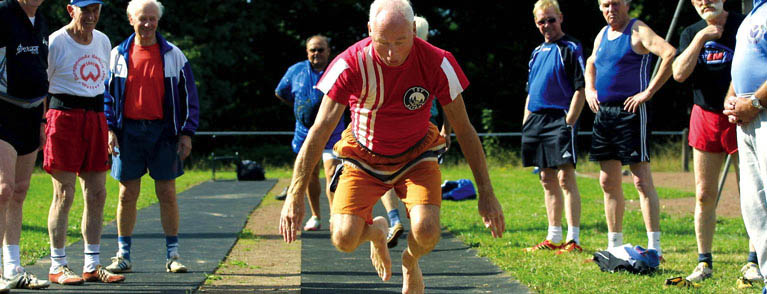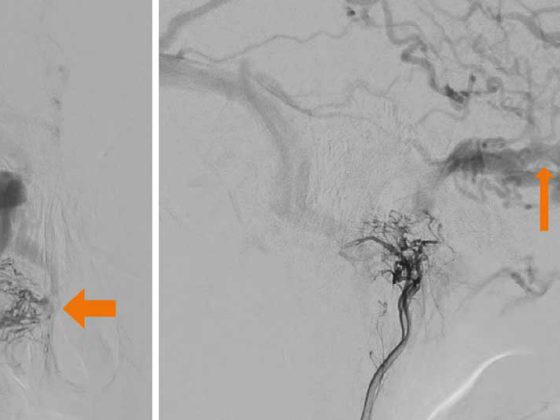No other medical measure has such positive effects on health as sport. Medical professionals should therefore prescribe it in the correct amount, duration and frequency.
The “healing power” of sport is based on the fascinating property of human cells and cell assemblies to adapt to external stimuli in the sense of self-protection. A good example of this is provided by the skin, which reacts in a well-known way to UV radiation (stimulus): No color change in case of insufficiently strong sun or too short exposure, burns in opposite situation and finally desired tan in case of “correct” irradiation. Repetition also plays a weighty role; without a second stimulation, the effect sought quickly returns to normal.
This adaptation phenomenon is the principle of training theory. Physical activity as a remedy is about just that. The right stimulus intensity, the appropriate exposure duration and the necessary repetitions (frequency) must be selected. And it should be remembered that the stimulus is only adequate until it takes a stronger one to produce further progress.
The stimuli that lead to favorable, health-promoting adaptations of various organs and organ systems are diverse. Also taken from exercise theory, we like to distinguish aerobic endurance stimuli, strengthening stimuli, and those that stimulate fine neuromuscular work such as balance, coordination, proprioception, and flexibility. Speed, another condition factor, is less relevant in the context discussed here.
As with the decathlete as a model athlete, it is beneficial to encourage all of these stimulus models. However, if one had to focus on one of them, it would clearly be aerobic capacity. It offers the widest effect.
Stimulus duration and stimulus volume
If one believes the recommendations of national and international health promotion societies (e.g. WHO, Society for Health Promotion), a weekly minimum of 2.5 hours of activity in the form of everyday activities or sport of moderate intensity is considered recommended for adults (e.g. walking the dog, gardening and more consistent household work, swimming, cycling or jogging). It is interesting to note that studies comparing the health effects of walking and jogging concluded that both forms of exercise had similar effects – but only insofar as calorie consumption was comparable. In practical terms, this means that you have to move longer when walking than when running. Ideally, these exposures should be spread over several days of the week. If this daily time cannot be found, more intensive activities such as playing tennis, running, cross-country skiing, etc. can be chosen as an alternative with identical effect during 1.25 hours twice a week.
For people 65 and older, the physical activity dose is also 150 minutes per week of moderate activity, or 75 minutes of strenuous physical activity. All physical activities should last at least ten minutes; for additional health effects, 300 minutes per week should be spent in moderate physical activity.
Adolescents should exercise at least one hour per day at moderate to high intensity. Two hours of exercise spread throughout the day would be optimal.
Additional activities provide further health benefits for all age groups. Long activities without physical activity should be avoided as far as possible or interrupted by short active breaks. Any movement from about ten minutes in duration can be added up throughout the day.
It is interesting to note that women and men do not react quite identically to physical training in terms of health: Whereas for men, moderate to more vigorous activities are more likely to be necessary to improve health, apparently even a lighter load is sufficient for the female sex.
There are several indications that also temporally shorter loads, e.g. only on weekends, make their contribution to health. For example, a study of 400,000 participants published in Taiwan in 2012 showed that even a low level of exercise of 15 minutes a day reduced mortality risk by 14% compared with non-exercising people. For those who really have little time available, there are no more excuses anyway: short intensive interval training (three times ten minutes per week) does as much for your health as classic endurance training. Here’s what this might look like: Two minutes warm-up, 20 seconds maximum load (e.g. maximum tramp speed on the exercise bike), two minutes leisurely pedaling and repeat the maximum load two more times. However, a check-up with a doctor before such a program is recommended! The suggestion of 10,000 steps per day has also proved very successful. The advent of reliable pedometers has popularized the method.
Interim summary
In summary, it must be admitted that the last word has not yet been spoken regarding the quantity of movement. There are works that promote rather higher loads (3000 to 4000 MET [metabolische Äquivalente]), and others that seriously claim scientifically that the recommended duration of exercise is mostly exaggerated. Finally, it should be mentioned that the relation between the amount of exposure and the health gain (dose-response curve) is not linear (Fig. 1).

Stimulus intensity
As we have seen, for tanning, the strength of the sun is an important factor (although not the only one). The same is true for the organs: they react according to the stimulus, although not always in a linear fashion.
The recommendations must be differentiated depending on whether we are talking about aerobic function, muscular strength or mobility and coordination. For the latter three help quite specific exercises that must be learned technically correct and then performed with a certain number of repetitions, depending on the exercise. To be efficient in this area without expert training is probably not possible (physiotherapist, trained gym teacher, sports scientist).
To determine the training intensity for aerobic endurance, there are several advices: The easiest is to choose a load that leads to a light sweat or at which you can just exchange a few sets with your training partner. Admittedly, not very scientific, but extremely practical. Another method is the use of the so-called Borg scale (“rating of perceived exertion”, RPE) (Tab. 1). This is a purely subjective perception of exertion, which does not correlate badly with objective physiological measures in athletes with a certain amount of experience.

The intensity of aerobic activity is also often controlled by heart rate, which is quite easy to do today with common measuring devices. But what is the right heart rate for an optimal training effect? From the history of sports medicine and training theory, one can find a myriad of more or less complicated formulas for determining the appropriate training heart rate. Table 2 shows some of them, almost all of which take age into account.

Personally, I advise against these countless formulas, which may look practical at first glance, because their accuracy is more than questionable. The scatter of maximum heart rate is enormous, as various studies have shown. For example, among peers, one person may have a HFmax of 210/min, the other one has a HFmax of 160/min, which can then lead to absurdities: According to one of the formulas quoted above (Whyte), the athlete with HRmax 160 in a training frequency of 186/min – 26 beats above his maximum pulse!
Meaningful performance tests exist to provide reliable training advice. Such should be used, even if they are clearly more elaborate (e.g. “heart-rate based lactate minimum test”). It must never be forgotten that correctly guided training also changes the above-mentioned measurement parameters and must therefore be “recalibrated” at regular intervals. Table 3 summarizes the elements described.
Conclusion
The effects of exercise on health are impressive:
- Walking 2.5 hours per week at a good pace reduces the risk of developing type 2 diabetes by 52%.
- Ten hours per week of physical activity reduces the risk of developing cardiovascular disorders by 35%.
- Regular exercise reduces the incidence of back pain by 50%.
- Regular physical activity, coupled with a healthy diet and no smoking, reduces the risk of cancer by 40%.
- Is there another comparably effective medical measure? “If exercise could be packed into a pill, it would be the single most widely prescribed and beneficial medicine in the nation” (N. Butler, MD, Director National Institute For Aging).
Take-Home-Message
It has been known for many years that sport is healthy – and that it even “heals”. Whereby it would be more appropriate to claim: “Sport could heal”. One condition is that the potential patient, who is not yet exercising, begins to exercise. On the part of the medical profession, in turn, it is a prerequisite that sport be prescribed in the first place instead of medication and other conventional therapies. And only in the correct quantity, duration and with the right rhythm. So there are some hurdles to overcome before sports can “heal.”
HAUSARZT PRAXIS 2017; 12(5): 5-7











